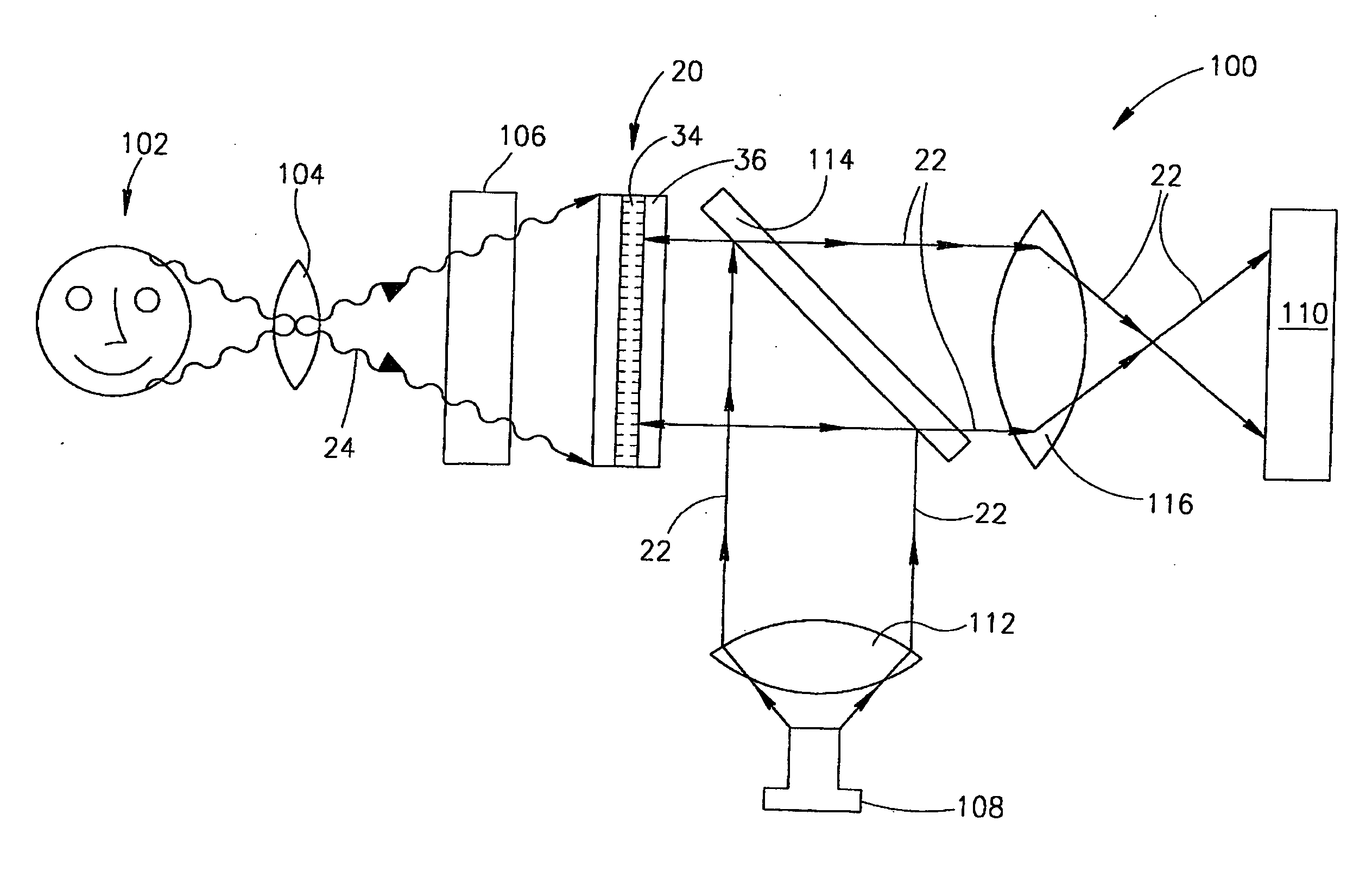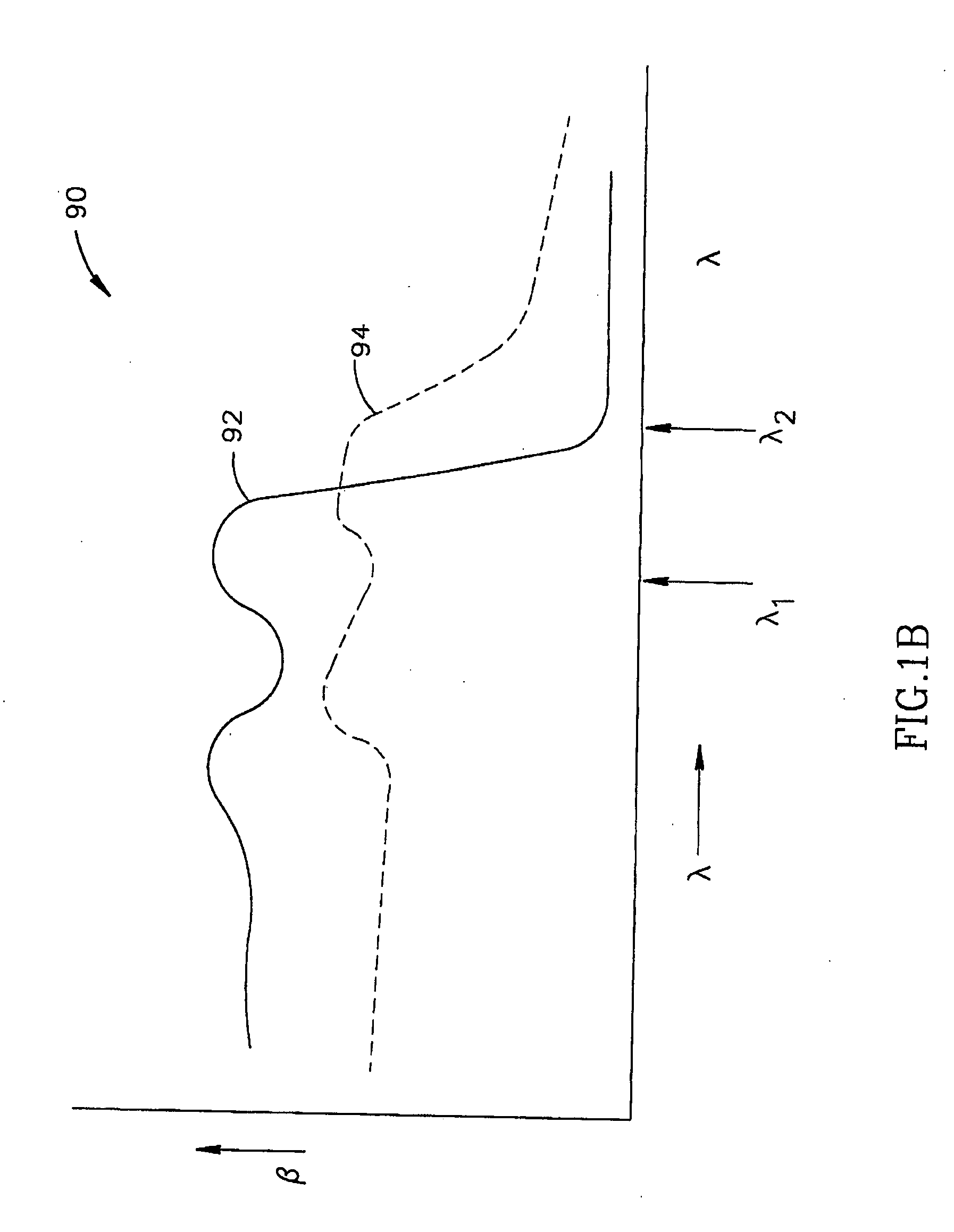Solid state image wavelength converter
a wavelength converter and solid-state technology, applied in the field of solid-state wavelength converters, can solve the problems of reducing the spatial resolution reducing the sensitivity of the wavelength converter, and the presence of the mirror tending to increase the distance, so as to achieve the effect of improving sensitivity
- Summary
- Abstract
- Description
- Claims
- Application Information
AI Technical Summary
Benefits of technology
Problems solved by technology
Method used
Image
Examples
Embodiment Construction
[0077]FIG. 1A schematically shows a cross section view of a solid state wavelength converter 20 encoding output light, represented by straight line arrows 22, with an image encoded in input light, represented by wavy arrows 24, in accordance with a preferred embodiment of the present invention. Input light 24 has a spatially varying intensity represented schematically by the clustering of wavy arrows 24 into groups. The varying intensity encodes an image of an object.
[0078] Wavelength converter 20 preferably comprises a layered body 26 comprising a heavily p doped layer 40, a photo-conducting layer 30, an electron multiplication region 32, a first dielectric mirror 34, a photo-modulation region 36, a heavily n-doped layer 42 and a second dielectric mirror 38. A power supply 44 back biases the p and n doped conducting layers 40 and 42 and generates an electric field, represented by and having a direction indicated by double arrow 46, in the layers sandwiched between them. Electric f...
PUM
| Property | Measurement | Unit |
|---|---|---|
| wavelength | aaaaa | aaaaa |
| wavelength | aaaaa | aaaaa |
| thick | aaaaa | aaaaa |
Abstract
Description
Claims
Application Information
 Login to View More
Login to View More - R&D
- Intellectual Property
- Life Sciences
- Materials
- Tech Scout
- Unparalleled Data Quality
- Higher Quality Content
- 60% Fewer Hallucinations
Browse by: Latest US Patents, China's latest patents, Technical Efficacy Thesaurus, Application Domain, Technology Topic, Popular Technical Reports.
© 2025 PatSnap. All rights reserved.Legal|Privacy policy|Modern Slavery Act Transparency Statement|Sitemap|About US| Contact US: help@patsnap.com



